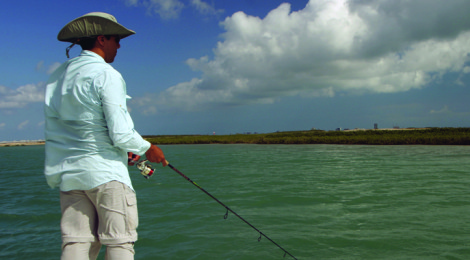
Sweetheart Specks
A month to fall in love with the pursuit of trophy sized, yellow-mouthed spotted sea trout, and a guide to success.
Story and Photography by Danno Wise
The second month of the year is known for America’s best known manufactured holiday — Valentine’s Day. Regardless of how fishermen feel about other humans, most hardcore trophy trout hunters are in love with February. In fact, the most ardent of sow speck seekers most often want nothing more for Valentine’s Day than a date with a trophy trout. And, as Valentine’s Day draws near, there will be plenty of anglers meeting the fish of their dreams.
FIND THEM FIRST
When it comes to searching for speckled trout during late winter, there are some basic rules of thumb that anglers need to be aware of. The first thing fishermen need to consider when selecting a likely spot during the winter months is the consistency of the bay floor. This time of year, a mucky mix of silt, decayed matter, bits of shell, etc is exactly the meeting spot fishermen need to find. With temperatures generally holding relatively low in February, it is a good bet the vast majority of trout in every Texas bay system will be congregating and feeding over the muddy bottom areas.
Muddy bottoms attract trout during the winter for a variety of reasons. The main reason fish seek out muddy bottom areas during winter is warmth. Muddy bottoms tend to retain heat longer than sand bottoms, so the water temperature over mud will be both warmer and more stable.
Of course, trout are not the only fish hoping to stay warm during winter. Baitfish also seek pockets of warm water and will be more concentrated over muddy bottom areas. Therefore, muddy bottom areas of the bay offer winter trout a combination of plentiful food and comfortable temperatures.
These mud bottom winter homes don’t just attract trophy trout. Speckled trout of all sizes will seek the insulated water over muddy bottom areas during the cool winter months. In general, big trout are a bit more reluctant to leave the muddy bottom areas than their smaller counterparts. They will move into shallower water when temperatures warm, but will almost always be in areas with mud beneath.
Smaller fish, on the other hand, will sometimes stray to grass or sand during a warm spell. But even these fish never move far from their muddy security blanket. So, even on relatively warm winter days, anglers seeking sow specks should still concentrate their efforts over or very near muddy bottom regions of the bay.
As is the case during every season and in every type of bay terrain, not every piece of muddy bottom bay floor will be holding fish during the winter months. Therefore, anglers still need to be able to eliminate unproductive water in order to narrow their search. Mud flats near deeper water or with channels bisecting them will generally hold more fish, as will mud bottom that has shell or grass mixed with it.







